Highlights
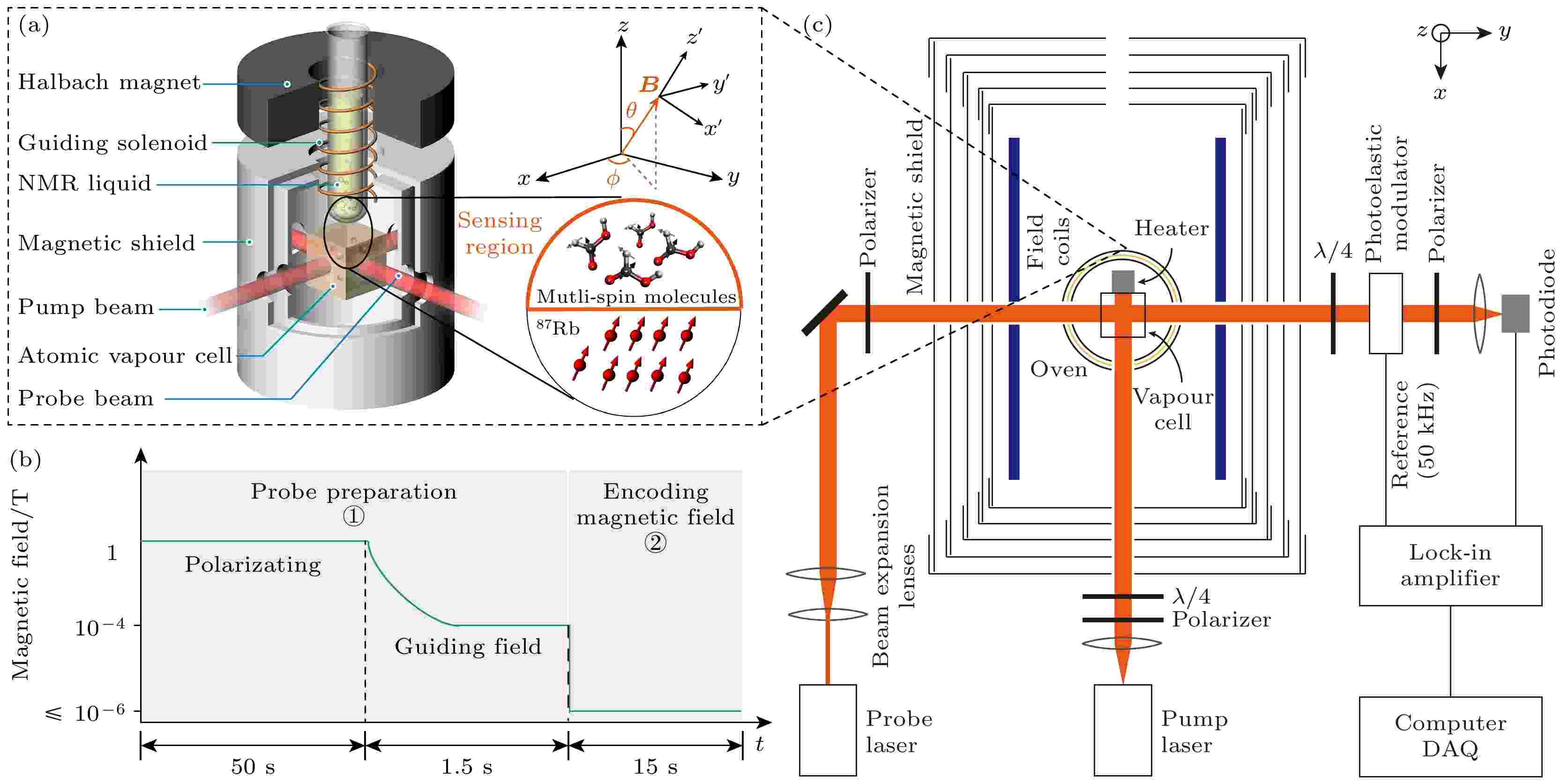
SPECIAL TOPIC—Technology of magnetic resonance
COVER ARTICLE
2025, 74 (11): 117401.
doi: 10.7498/aps.74.20250271
Abstract +
Quantum sensing utilizes the quantum resources of well-controlled quantum systems to measure small signals with high sensitivity, and has great potential in both fundamental science and concrete applications. Interacting quantum systems have attracted increasing interest in the field of precise measurements, owing to their potential to generate quantum-correlated states and exhibit rich many-body dynamics. These features provide a novel avenue for exploiting quantum resources in sensing applications. Although previous studies have shown that using such systems can improve sensitivity, they mainly focused on measuring individual physical quantities. In experiment, the challenge of using interacting quantum systems to achieve high-precision measurements of multiple physical parameters simultaneously has not been explored to a large extent. In this study, we demonstrate a first realisation of interaction-based multiparameter sensing by using strongly interacting nuclear spins under ultra-low magnetic field conditions. We find that, as the interaction strength among nuclear spins becomes significantly larger than their Larmor frequencies, a different regime emerges where the strongly interacting spins can be simultaneously sensitive to all components of a multidimensional field, such as a three-dimensional magnetic field. Moreover, we observe that the strong interactions between nuclear spins can increase their quantum coherence times to as long as several seconds, thereby improving measurement precision. Our sensor successfully achieves precision measurement of three-dimensional vector magnetic fields with a field sensitivity reaching the order of 10–11 T and an angular resolution as high as 0.2 rad. Importantly, this approach eliminates the need for external reference fields, thereby avoiding calibration errors and technical noise commonly encountered in traditional magnetometry. Experimentally optimized protocol further enhances the sensitivity of the interacting spin-based sensor by up to five orders of magnitude compared with non-interacting or classical schemes. These results demonstrate the enormous potential of interacting spin systems as a powerful platform for high-precision multi-parameter quantum sensing. The techniques developed here pave the way for a new generation of quantum sensors that use intrinsic spin interactions to exceed the traditional sensitivity limits, presenting a promising route toward ultra-sensitive, calibration-free magnetometry in complex environments.

Abstract +
The eigenstate thermalization hypothesis describes the nonequilibrium dynamics of an isolated quantum many-body system, during which a pure state becomes locally indistinguishable from a thermal ensemble. The discovery of quantum many-body scars (QMBS) shows a weak violation of ergodicity, characterized by coherent oscillations of local observables after a quantum quench. These states consist of the tower of regular eigenstates which are equally spaced in the energy spectrum. Although subextensive entanglement scaling is a primary feature widely used to detect QMBS numerically as entropy outliers, rainbow scars exhibit volume-law scaling, which may challenge this property. In this work, we construct the rainbow scar state in the fracton model on a two-leg ladder. The fracton model is composed of four-body ring-exchange interactions, exhibiting global time-reversal symmetry $ \hat{{{\cal{T}}}}={{\cal{K}}} {\mathrm{i}} \hat{\sigma}^y $ and subsystem $ {\hat{U}(1)}=\displaystyle \prod\nolimits_{j \in \{\text {row/col}\}} {\mathrm{exp}}\Big({{\mathrm{i}} \dfrac{\theta}{2} \hat{\sigma}_j^z}\Big)$ symmetry. The subsystem symmetry constrains particle mobility, hindering the establishment of thermal equilibrium and leading to a series of anomalous dynamical processes. We construct the rainbow scar state with distributed four-body GHZ states whose entanglement entropy follows the volume law. By calculating the eigenstates of the fracton model with exact diagonalization, the rainbow scar state consists of a series of degenerate high-energy excited states that are not significant outliers among other eigenstates in the spectrum. By introducing the on-site interaction to break the time-reversal symmetry, the degeneracy of rainbow scar states is lifted into an equally spaced tower of states, ensuring the revival of the initial state. However, when subsystem $\hat U(1) $ symmetry is broken, the scar state is quickly thermalized, indicating that the weak thermalization may be protected by subsystem $\hat U(1) $ symmetry. Additionally, we propose a scheme for preparing the rainbow scar state by modulating the strength of the four-body interaction and $ \hat{\sigma}^z$ operations, analyzing the influence of noise on the strength of the four-body interaction. This work provides new insights into the weak thermalization processes in fracton model and aids in understanding the nature of ETH-violation in various nonequilibrium systems.
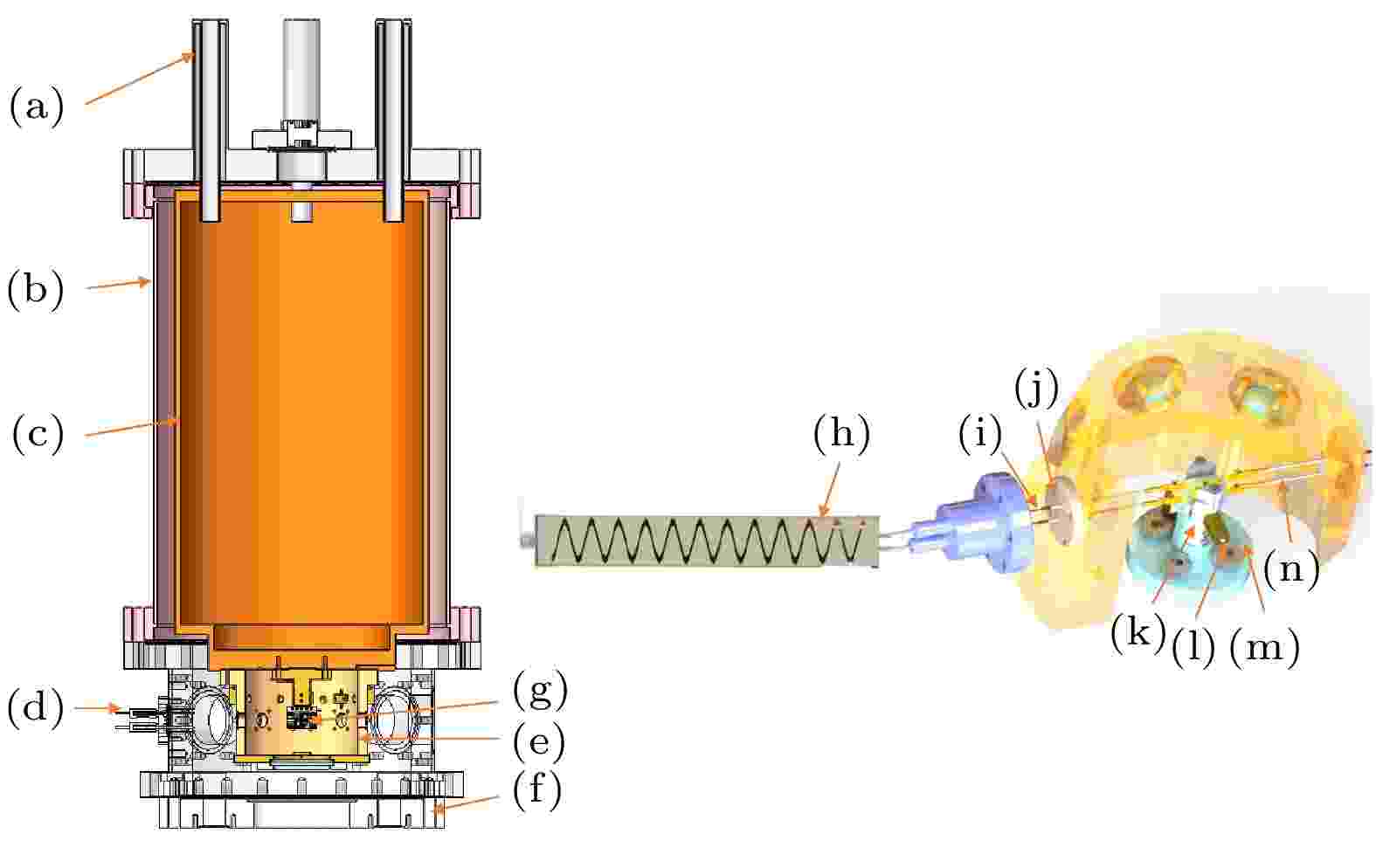
Abstract +
In ion optical clock systems, the motional effect of trapped ions is a key factor determining clock performance and currently representing a key limitation in achieving lower uncertainty between different ion-based optical clocks. According to the first liquid nitrogen-cooled Ca+ ion optical clock (2022 Phys. Rev. Appl. 17 034041 ), we develop a new physical system for a second Ca+ ion optical clock and make significant improvements to its ion trapping apparatus. These improvements primarily focus on two aspects. The first aspect is that we design and implement an active stabilization system for the RF voltage, which stabilizes the induced radio-frequency (RF) signal on the compensation electrodes by adjusting the amplitude of the RF source in real time. This method effectively suppresses long-term drifts in the radial secular motion frequencies to less than 1 kHz, achieving stabilized values of $\omega_x = 2\pi \times 3.522(2)\;\mathrm{MHz}$ and $\omega_y = 2\pi \times 3.386(2)\;\mathrm{MHz}$. The induced RF signal is stabilized at 59121.43(12) µV, demonstrating the high precision of the stabilization system. The second aspect is that we optimize the application of compensation voltages by directly integrating the vertical compensation electrodes into an ion trap structure. This refinement can suppress excess micromotion in all three mutually orthogonal directions to an even lower level. Tuning the RF trapping frequency close to the magic trapping condition of the clock transition, we further evaluate the excess micromotion-induced frequency shift in the optical clock to be $2(1) \times 10^{-19}$. To quantitatively assess the secular-motion of the trapped ion, we measure the sideband spectra on the radial and axial motion modes, both red and blue sideband spectra. From these measurements, we accurately determine the mean phonon number in the three motional modes after Doppler cooling, corresponding to an average ion temperature of $0.78(39)\;\mathrm{mK}$, which is close to the Doppler cooling limit. The corresponding second-order Doppler shift is evaluated to be $-(2.71 \pm 1.36) \times 10^{-18}$. The long-term stability of the radial secular motion frequency provides favorable conditions for implementing three-dimensional sideband cooling in future experiments, which will further reduce the second-order Doppler shift. These advancements not only enhance the overall stability of the optical clock but also lay the foundation for reducing its systematic uncertainty to the $10^{-19}$ level.

SPECIAL TOPIC—Order tuning in disordered alloys
COVER ARTICLE
2025, 74 (8): 086101.
doi: 10.7498/aps.74.20250097
Abstract +

SPECIAL TOPIC——Quantum transport in topological materials and devices
COVER ARTICLE
2025, 74 (7): 077401.
doi: 10.7498/aps.74.20241672
Abstract +
The hybrid system of low-dimensional electronic materials and superconducting materials has always been an attractive structure for studying mesoscopic transport and low-dimensional superconducting properties. Low-dimensional structures with strong spin-orbit coupling exhibit rich quantum phenomena combined with superconducting macroscopic quantum states. Therefore it has become an important platform for exploring novel physical properties and developing new topological quantum devices. The construction of hybrid superconducting devices based on high-quality one-dimensional electronic materials and the exploration of interfacial quantum transport phenomena have become the research frontiers. It is crucial to understand the characteristic scattering mechanisms and quantum transport processes in these hybrid systems on a nanoscale. The study of the coupling mechanism between the charge state and the topological localized state, and the experimental probe of the intrinsic transport properties of the topological states are the key issues, which enable the development of the new principles and methods for novel superconducting nano electronic devices and topological quantum devices. Due to the competition of multiple energy scales and complex bound states in these hybrid structures, the device physics and measurement schemes are facing unprecedented challenges. This paper reviews recent research progress of hybrid superconducting devices based on one-dimensional electronic systems, focusing on the material systems based on semiconducting nanowires and carbon nanotubes. Semiconducting nanowires with strong spin-orbit coupling and large Landau g-factor are expected to support Majorana bound states, and further improvements are needed in the material quality, interface between superconductors and nanowires, understanding of the transport mechanism, and detection scheme. The construction strategies of extending topological phase space, including broken symmetry, helical modes, semiconducting characteristics, and attenuation of the external magnetic field, are proposed and discussed in hybrid superconducting devices based on carbon nanotubes. The main phenomena and experimental challenges, ranging from material to device physics, are introduced briefly. Finally, this paper summarizes and prospects the development and transport studies of topological quantum devices based on one-dimensional systems.
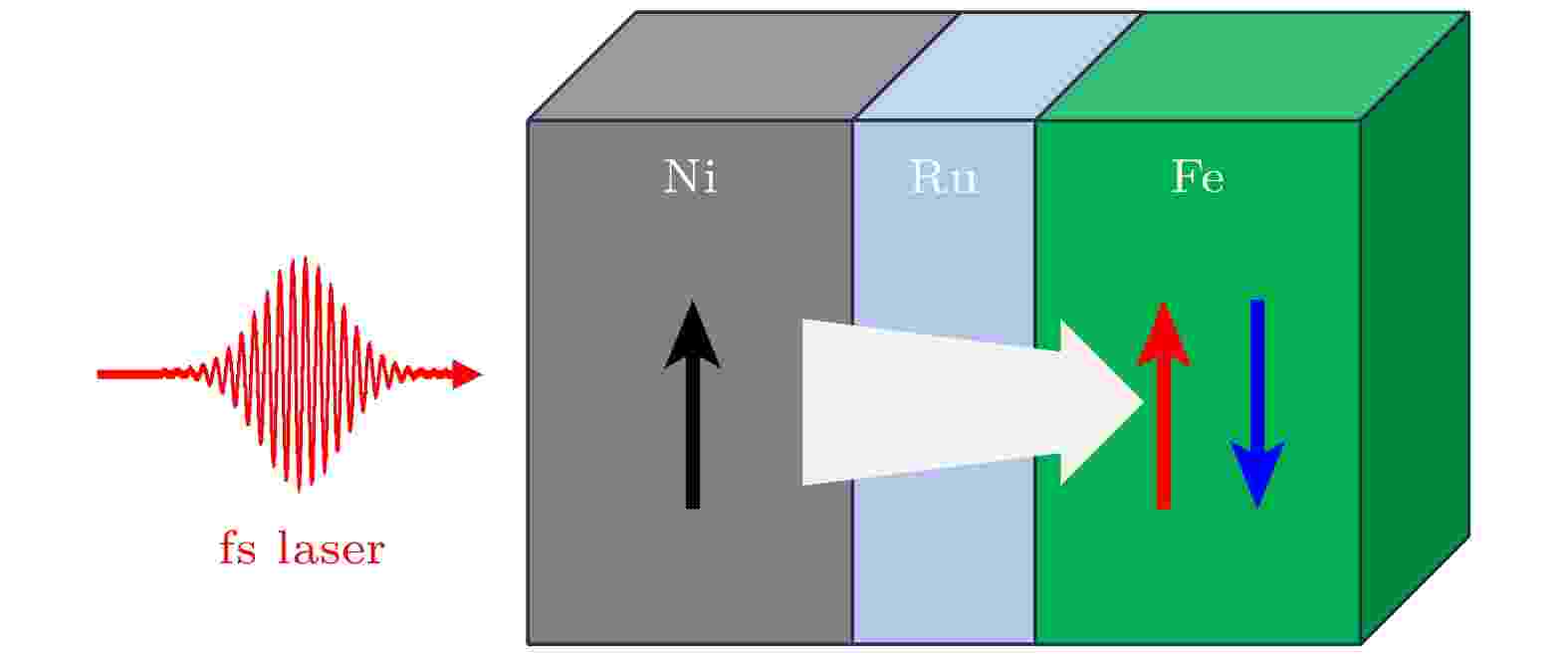
Abstract +
The discovery of ultrafast demagnetization has provided a new means for generating ultrafast spin currents by using an ultrashort laser, potentially enabling faster manipulation of material magnetism. This has sparked research on the transport mechanisms of ultrafast spin currents. However, the basic processes are still poorly understood, especially the factors influencing interlayer spin transfer. In this work, a superdiffusive spin transport model is used to investigate the ultrafast spin transport mechanism in the Ni/Ru/Fe spin valve system, with a particular focus on how interlayer spin transfer affects the ultrafast magnetization dynamics of the ferromagnetic layer. First, by calculating the laser-induced magnetization dynamics of the Ni/Ru/Fe system under different magnetization alignments, the recent experimental findings are validated. Further analysis shows that reducing the thickness of the Ru spacer layer will significantly enhance the spin current intensity and increase the demagnetization difference in the Fe layer, confirming the key role of the hot electron spin current generated by the Ni layer in interlayer spin transport. In addition, the spin decay length of hot electron spin currents in the spacer Ru layer is determined to be approximately 0.5 nm. This work also shows that laser-induced transient magnetization enhancement can be achieved by adjusting the relative laser absorption in the films. These results provide theoretical support for ultrafast magnetic control of future spin valve structures and contribute to the development of spintronics in high-speed information processing and storage applications.

Abstract +
Laser intensity noise suppression in the millihertz frequency band is essential for space-based gravitational wave detection to ensure the sensitivity of the interferometer. Optoelectronic feedback technology is one of the most effective methods of suppressing laser intensity noise. The noise of the photodetector that is the first-stage component in the feedback loop, directly couples into the feedback loop, thus significantly affecting the laser intensity noise. In this paper, starting from the requirement of suppressing laser intensity noise in the 0.1 mHz–1 Hz frequency band for space-based gravitational wave detection, the factors affecting the electronics of photodetectors at extremely low frequencies are analyzed in detail. Using the low dark current characteristic of photodiodes in photovoltaic mode, a zero-bias voltage scheme is adopted to reduce the dark noise of the photodiode. A transimpedance amplification circuit is designed using an integrated operational amplifier with zero offset voltage drift and low-temperature drift metal foil resistors, thereby optimizing the transimpedance capacitor and follower circuit to reduce 1/f noise in the circuit. Active temperature control is employed to stabilize the responsivity of photodiode, and additional measures such as using a homemade low-noise power supply and shielding interference are taken to further reduce the noise. Ultimately, an ultra-low electronic noise photodetector operating in the 0.1 mHz–1 Hz frequency band is developed. A homemade intensity noise evaluation system is used to comprehensively assess the noise both in the time domain and in the frequency domain. The constant noise characteristics of the homemade detector are estimated experimentally. The experimental results show that the electronic noise spectral density of the homemade detector reaches 2×10–6 V/Hz1/2 in the 0.1 mHz–1 Hz frequency band, and the electronic noise of the detector does not vary with optical power. The detector achieves a gain of 35 kV/W at 1064 nm. The noise performance of the detector is two orders of magnitude lower than the laser intensity noise requirement (1×10–4 V/Hz1/2) for space-based gravitational wave detection, providing a critical component and technical support for high-gain optoelectronic feedback control and laser intensity noise suppression in space-based gravitational wave detection.

Abstract +
Dielectronic recombination (DR) experiments of highly charged ions not only provide essential atomic benchmark data for astrophysical and fusion plasma research but also serve as a stringent test for strong-field quantum electrodynamics (QED) effects, relativistic effects, and electron correlation effects. High-intensity heavy-ion accelerator facility (HIAF), currently under construction at Huizhou, China, will have a high-precision spectrometer ring (SRing) equipped with a 450 kV electron-cooler and an 80 kV ultracold electron-target. This advanced setup facilitates precise measurements of the DR process for highly charged ions in a broad range of center-of-mass energy, from meV to tens of keV. In this work, we carry out the molecular dynamics simulation of the electron beam temperature distribution of the ultracold electron-target at the SRing. The simulation results indicate that after treatment by the designed adiabatic magnetic field and acceleration field, the transverse and longitudinal electron beam temperature generated by the thermionic electron gun can be reduced from 100 meV to below 5 meV and 0.1 meV, respectively. Furthermore, we analyze the influence of this ultracold electron beam temperature on the resonance peak and energy resolution in DR experiment. The resolution gain at the SRing electron-target is particularly pronounced at small electron-ion collision energy, which provides unique experimental conditions for the DR experiments. Taking lithium-like $ {}_{~\,54}^{129}{{\mathrm{X}}{\mathrm{e}}}^{51+} $ and $ {}_{~\,92}^{238}{{\mathrm{U}}}^{89+} $ ions for example, we simulate the DR resonance spectra at the SRing and compare them with the simulated results from the experimental cooler storage ring CSRe. The results reveal that the SRing experiments can resolve fine DR resonance structures with ultra-high energy resolution compared with those from the CSRe. This work lays a solid foundation for precise DR spectroscopy of highly charged ions at the SRing to stringent test of strong field QED effect and extraction nuclear structure information.
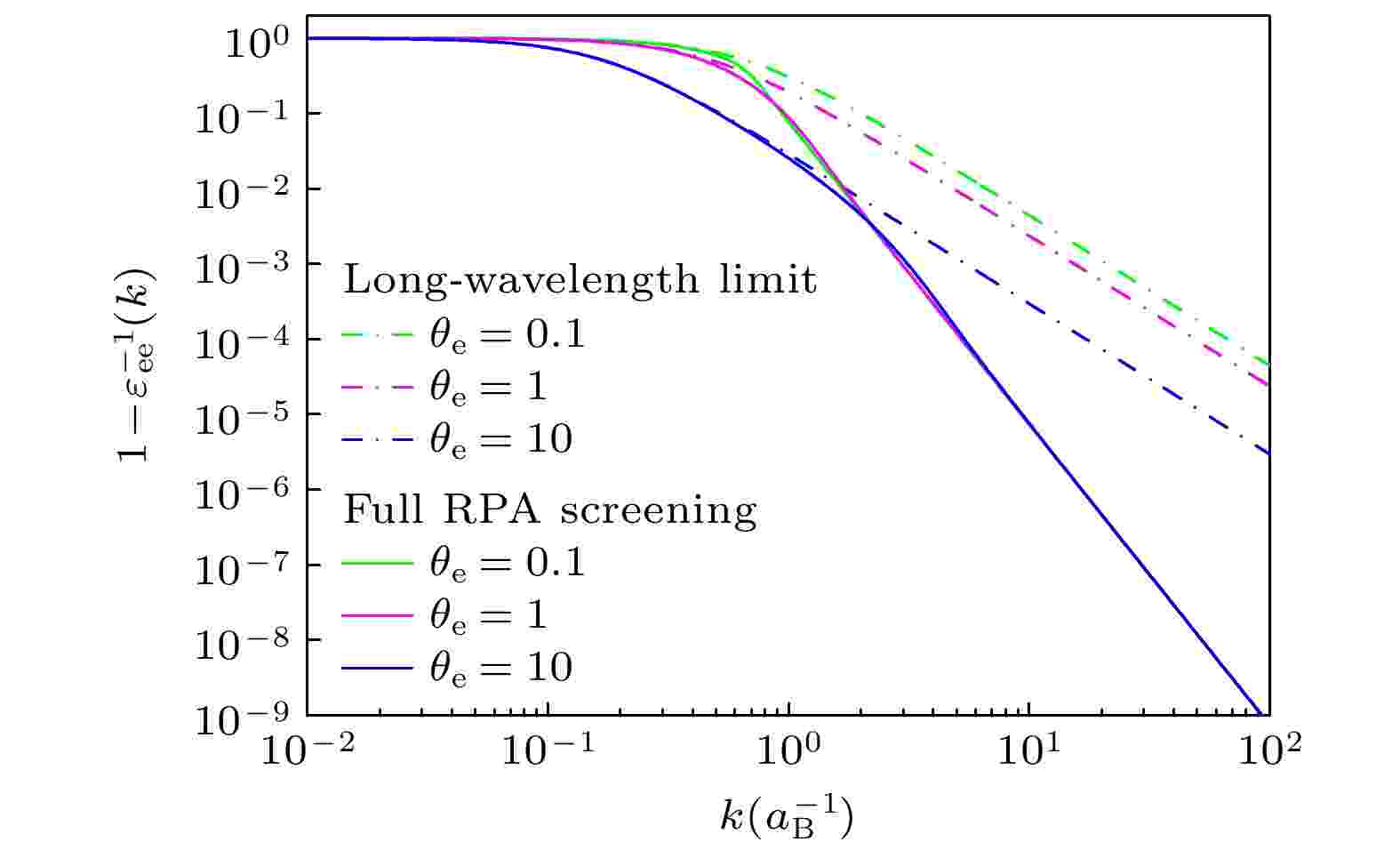
SPECIAL TOPIC—Dynamics of atoms and molecules at extremes
COVER ARTICLE
Analysis of dynamic response and screening effects on electron-ion energy relaxation in dense plasma
2025, 74 (3): 035101.
doi: 10.7498/aps.74.20241588
Abstract +
Accurate knowledge of electron-ion energy relaxation plays a vital role in non-equilibrium dense plasmas with widespread applications such as in inertial confinement fusion, in laboratory plasmas, and in astrophysics. We present a theoretical model for the energy transfer rate of electron-ion energy relaxation in dense plasmas, where the electron-ion coupled mode effect is taken into account. Based on the proposed model, other simplified models are also derived in the approximations of decoupling between electrons and ions, static limit, and long-wavelength limit. The influences of dynamic response and screening effects on electron-ion energy relaxation are analyzed in detail. Based on the models developed in the present work, the energy transfer rates are calculated under different plasma conditions and compared with each other. It is found that the behavior of electron screening in the random phase approximation is significantly different from the one in the long-wave approximation. This difference results in an important influence on the electron-ion energy relaxation and temperature equilibration in plasmas with temperature $T_{\rm{e}} < T_{\rm{i}}$. The comparison of different models shows that the effects of dynamic response, such as dynamic screening and coupled-mode effect, have stronger influence on the electron-ion energy relaxation and temperature equilibration. In the case of strong degeneracy, the influence of dynamic response will result in an order of magnitude difference in the electron-ion energy transfer rate. In conclusion, it is crucial to properly consider the finite-wavelength screening of electrons and the coupling between electron and ion plasmonic excitations in order to determine the energy transfer rate of electron-ion energy relaxation in dense plasma.
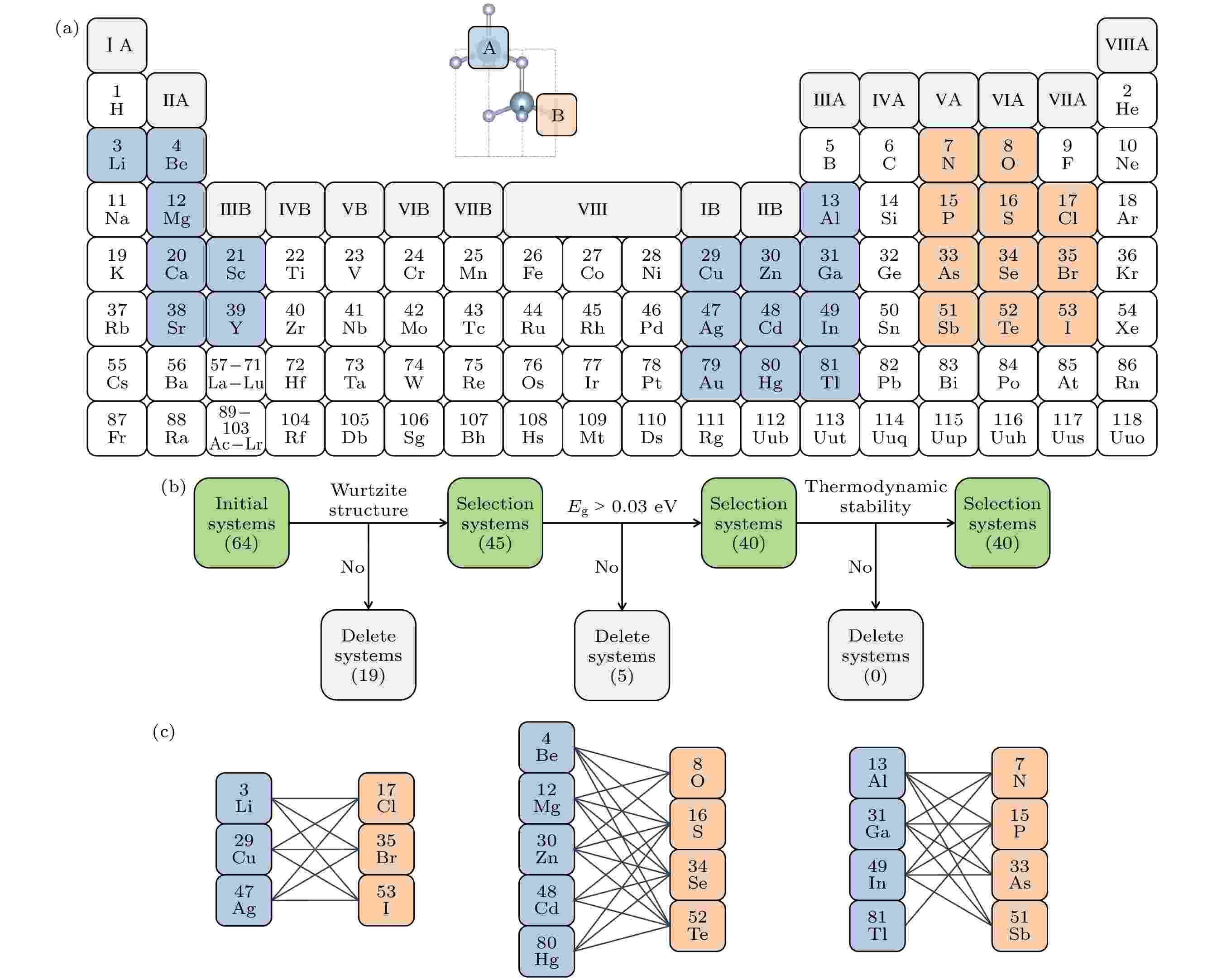
Abstract +

- 1
- 2
- 3
- 4
- 5
- ...
- 12
- 13










